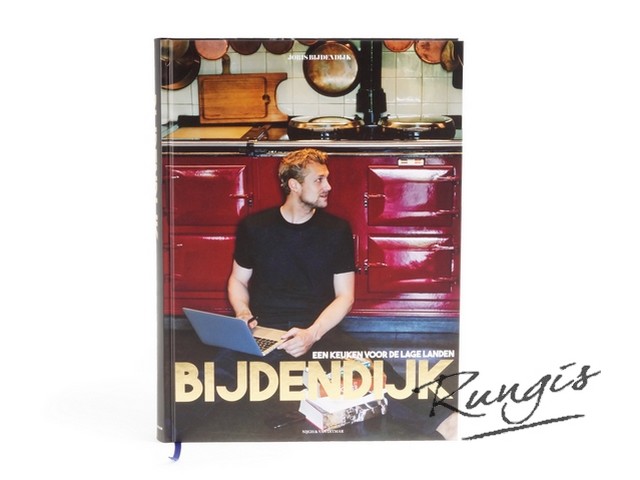Joris Bijdendijk
Joris Bijdendijk is executive chef of RIJKS, the restaurant of the Rijksmuseum in Amsterdam.
On Instagram we can see your stewed shallots with pommes Paulo and a carrot gravy. Wat do you say when people think your dishes are too pretty to eat?
‘Big smile: ‘That you can safely try it. You can call our dishes approachable art. Or better said, because it maybe sounds a bit too pompously, approachable beauty.’
On the menu we find a intriguing dish: fermented celeriac, coconut, sea buckthorn and sambal…
‘ You would like to know how we make that? Well, we start with a cream of carrots and sea buckthorn. On top we put a salad of fermented celeriac cut in cubes, flavored with homemade sambal, plus red onions, apple and a green shiso. On top of that: slices of fermented celeriac, lightly folded, like a flower. With coconut vinaigrette, some type of tiger milk which we know from the ceviche from the Peruvian kitchen. Vegetarians: eat your heart out!’
What’s your favorite type of vegetable in April?
‘In the back of my new book you can find a product calendar i made with Rungis. You can see exactly what i’m looking forward to… If i had to choose: green almonds. As soon as they’re in, i have to have it. Unripe almonds are the caviar of vegetables. The cleaning part is a heavy job, but so worth it. I prefer to eat them as pure as possible. Celeriac from the spit, cutting a slice of that, oyster cream on top and some green almonds and onion gravy with that. You have absolutely no idea how amazing that tastes!’
What is the greater revelation in preparation techniques. Carrot jerky from the food dryer?
‘It’s all about the combination of different preparations within a dish. You can compare it to the scent of perfume. A good perfume is layered. There’re always three main tones that stand out, for example cloves, hibiscus or eucalyptus. But underneath are all these different scents. With the fake perfumes you can only smell those three basic ingredients. The same applies to dishes. You can apply different preparations which all have a different effect to the taste. And that also creates stratification. Vegetables are much more diverse than fish or meat; you can add so much more techniques. Fortunately, we go back in time. Fish and meat used to be expensive and unreachable for many people. When that changed, we started to consume too much. Now there is a turnaround. More an more people are working with vegetables.’
Not every chef is as competent when it comes to vegetables…
‘For all colleagues who have difficulties with vegetables: make a mind map of vegetables and preparations. They can serve as a mnemonic with the creative process. It doesn’t have to be super complicated. Look at our celeriac which we cook in a salted crust, it’s the base of many of or dishes. One of our latest versions is with goat yoghurt, stalks of lovage, goat’s cheese and a gravy of black currants. Or, as we serve it now, with trout prepared as gravad lax.’
You have two young children, how do you let them eat vegetables?
‘In all possible ways: we make no distinction. Fortunately, they eat everything…’
Why Rungis? And how are their vegetables compared to what comes out of your father’s vegetable garden?
‘With our complicated, often challenging requests, we can always contact them. And also important, they give the right advice. Rungis is a reliable quality partner. Not comparable to my father’s vegetables garden: that’s the best one. But very limited.’



